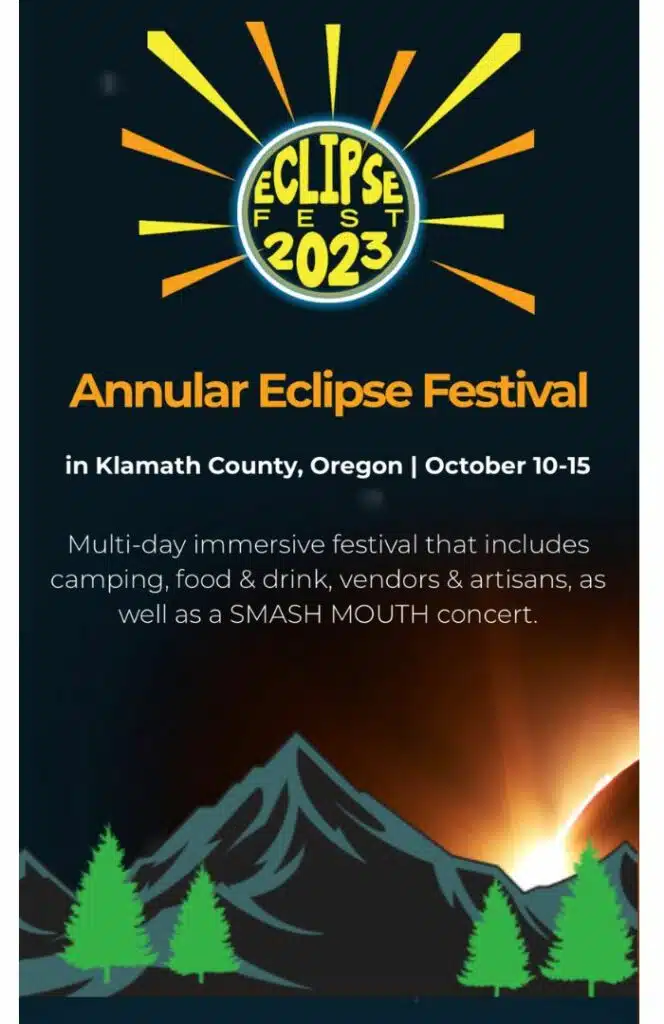This post may contain affiliate links.
One of the most exhilarating experiences of our RV travels was witnessing the 2017 solar eclipse. There are two more solar eclipses happening in the US within the next year. An Annular Solar Eclipse in October 2023 and a Total Solar Eclipse in April 2024.
Both the Annular Solar Eclipse and Total Solar Eclipse are indeed rare and special events to witness. The next major eclipse in the US after these two eclipses isn’t expected until after 2030. In this post, we’ll answer common questions about solar eclipses – and when, where why, and how you can see the next one in the US!
Want to see and feel what a solar eclipse event can be like? Watch our short video from the total solar eclipse in 2017, at the end of this post.
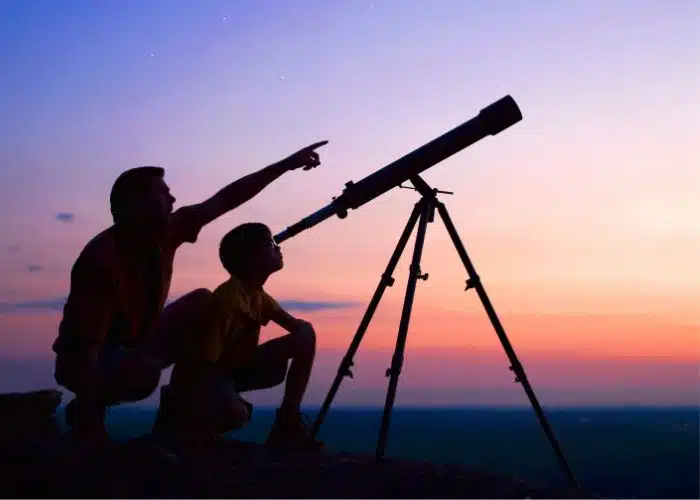
Questions answered / Table of Contents:
- When is the next solar eclipse in the US?
- Where can I see the next solar eclipse?
- What causes a solar eclipse?
- What is the difference between a partial, annular, and total solar eclipse?
- How long does a solar eclipse last?
- Is it safe to look at a solar eclipse?
- 8 tips for fully enjoying a solar eclipse
- What events or activities are there for the next solar eclipse?
- When is the next total solar eclipse in the US?
- Where will we be for the next solar eclipse?
- Experience a solar eclipse by watching our short video
When is the next solar eclipse in the US?
There are three types of solar eclipses. The next solar eclipse in the United States will happen on October 14th, 2023. This will be an Annular Solar Eclipse, which creates the famed ‘ring of fire’ image. After that, the next Total Solar Eclipse in the US will be on April 8th, 2024. Read on for more about the different types of solar eclipses.
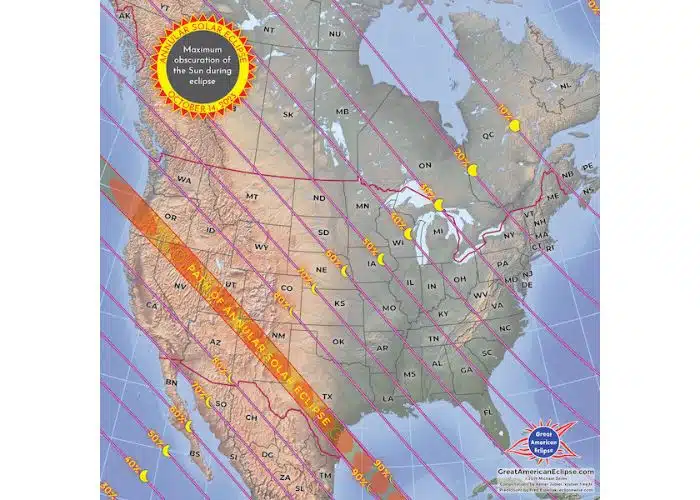
Photo credit: Michael Zeiler, GreatAmericanEclipse.com
Where can I see the next solar eclipse?
The annual solar eclipse on October 14th, 2023 will be viewable in many states across the US. It will be viewed first in Oregon. Then it will go across the US and finish near Corpus Christi Texas.
It is important to note that when viewing a solar eclipse, it is vital to be within the narrow band of maximum obscurity of the sun. The band is usually less than 90 miles wide. During a total solar eclipse, this band is called the path of totality. When it is an annular eclipse, it is called the path of annularity. If you are anywhere outside of the path, you will only see a partial eclipse.
The further you are away from the center of the path, the less of the sun will be obscured. Based on our own experience seeing the solar eclipse in Oregon in August 2017, being in the path of totality really was the difference between night and day.
So for the 2023 annular solar eclipse, you’ll want to be directly in the path of annularity. And in the path of totality for the 2024 total solar eclipse.
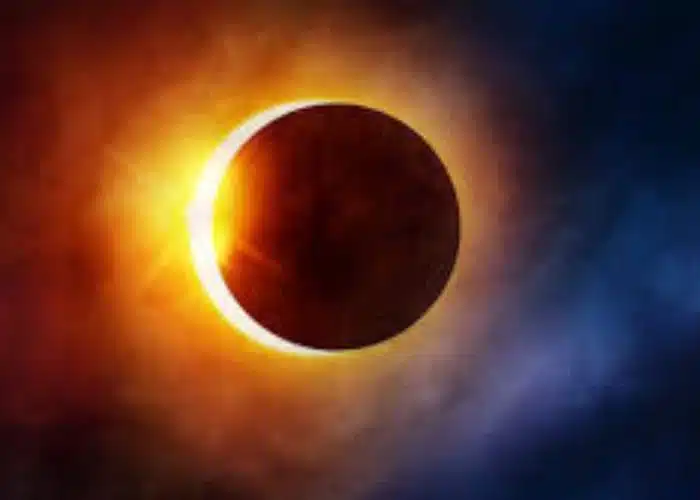
Photo credit: www.timeanddate.com
What causes a solar eclipse?
A solar eclipse is created when the moon comes between the sun and the Earth. This places part of the Earth in a shadow and partially obscures the view of the sun. As mentioned above, there is only a narrow path created by the shadow. That is because the moon is not large enough to cast a large shadow on the Earth.
Since most of the Earth’s surface is water, and we mostly live on land, we don’t see eclipses very often. Especially because they always occur in different parts of the world.
Our most recent total solar eclipse in the US was on August 21st, 2017. It is commonly known as the Great American Eclipse, because it was widely viewable across the USA, and the path of totality was only viewable in the USA. The path of totality was viewable in a narrow path that stretched in a southeasterly direction from Oregon down to South Carolina. Which made it an extremely rare and special event.
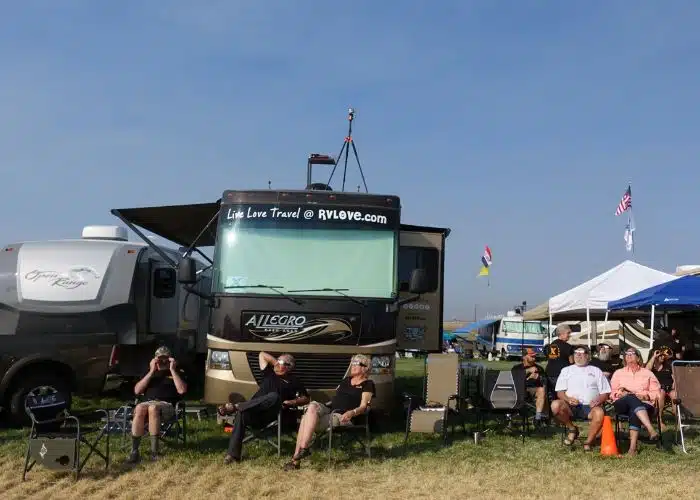
RVers gather to watch the 2017 solar eclipse
What is the difference between a partial, annular, and total solar eclipse?
Here’s an overview of the three different kinds of eclipses, and what you can expect to see.
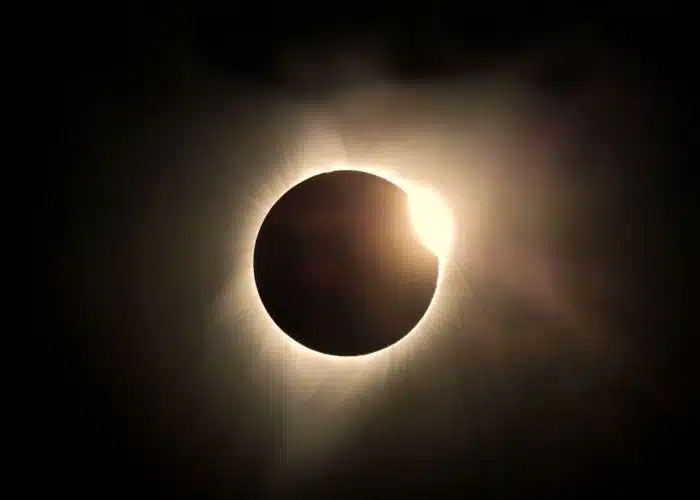
Total Solar Eclipse
A total solar eclipse occurs when the Moon completely covers the view of the Sun. This view is only available if you are within the path of totality. The path of totality will commonly be 9,000 miles long, but only 90 miles wide. Other phases of a total solar eclipse may include the diamond ring, a very small ring around the sun with an extra diamond-like sparkle on one end. The diamond ring image will likely only last for a second.
When looking at the sun during a total solar eclipse – wearing the appropriate eye protection – you will see a black center with a glow around it. This phase is the only time it is safe to view the eclipse without protective glasses. During the totality phase, the sky will be significantly darker, temperatures will drop, and birds and wildlife will often go quiet. The last total solar eclipse we witnessed was eerily beautiful, it literally gave us goosebumps.
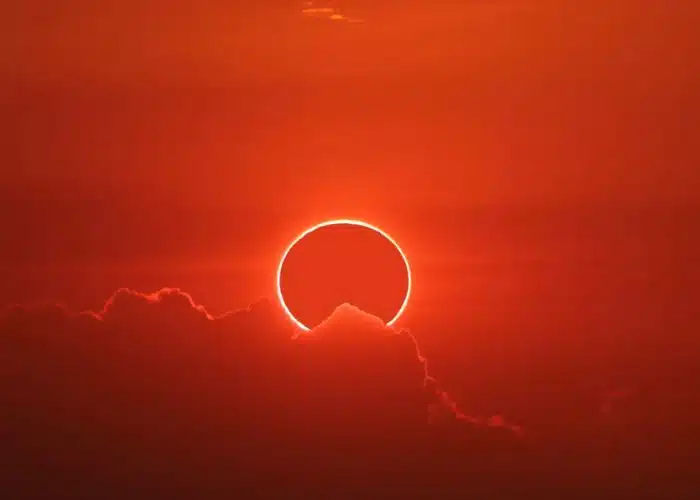
Annular Solar Eclipse
An annular, or ring-like, solar eclipse is one in which the Moon nearly blocks the entire sun, but the Moon is too far from the Earth. So, it does not fully cover the sun. Instead, it will leave what is often called a ‘ring of fire’. Just before and just after the ring of fire, viewers may see what is called Baily’s beads, which are bright beads along the edge.
At no point during an annular eclipse is it safe to view without protective glasses because there are always some sun rays in view. Similar to total solar eclipses, for maximum viewing, you must be within the narrow path of annularity to view the ring of fire at its most spectacular.
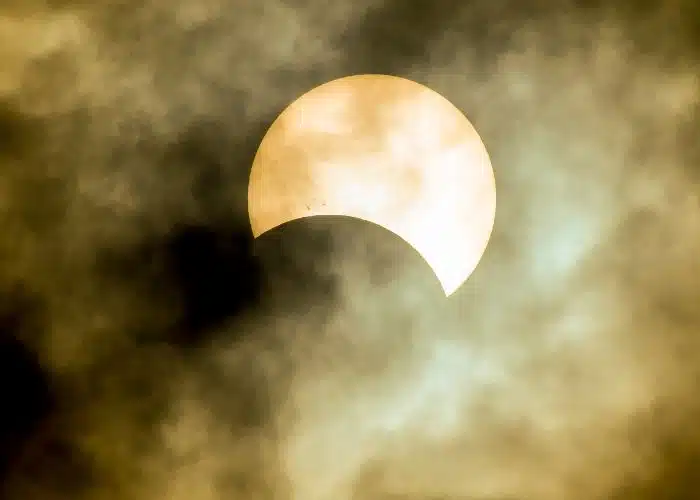
Partial Solar Eclipse
Partial solar eclipses are when the Moon only partially obscures the full view of the Sun. It may be barely noticeable if only blocking a small portion of the Sun. If there is a total solar eclipse or an annular solar eclipse occurring, but you are not within the maximum viewability path, you will only see a partial eclipse. The further you are from the path, the less the Sun will be obscured. So, if a total or annular eclipse occurs near you, ensure you are well within the path. If it is a total solar eclipse, it can literally feel like a ‘night and day ‘ difference.
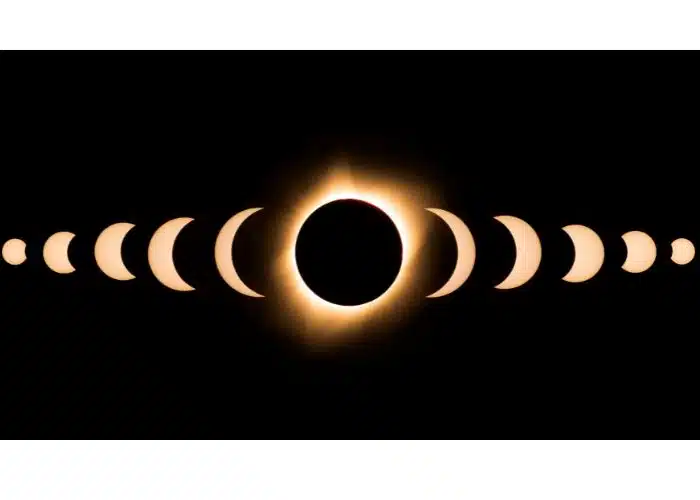
How long does a solar eclipse last?
The length of time a solar eclipse lasts depends on many factors. Generally speaking, the partial solar eclipse portion can last multiple hours. But the total solar eclipse maximum phase of totality will last between a few seconds and seven minutes, depending on where you are. You will definitely want to be prepared for the exact time of maximum viewability.
If you time it wrong with cooking a meal, or even a bathroom visit, you might miss the best part. So make sure you note the specific times for your location for the eclipse event you plan on viewing. Here is an example for the upcoming Annular Solar Eclipse on 14th October: https://www.timeanddate.com/eclipse/map/2023-october-14
An example of the kind of information you will see
Klamath Falls, OR Micro Area, Oregon, USA
Annular solar eclipse visible (89.00% coverage of Sun)
Magnitude: 0.9655
Duration: 2 hours, 36 minutes, 23 seconds
Duration of annularity: 4 minutes, 30 seconds
Partial begins: Oct 14 at 8:05:27 am
Full begins: Oct 14 at 9:17:31 am
Maximum: Oct 14 at 9:19:47 am
Full ends: Oct 14 at 9:22:01 am
Partial ends: Oct 14 at 10:41:50 am
Times shown in local time (PDT)
As you can seem the actual duration of annularity is 4 minutes and 30 seconds, but the total duration of the eclipse is over two and a half hours!
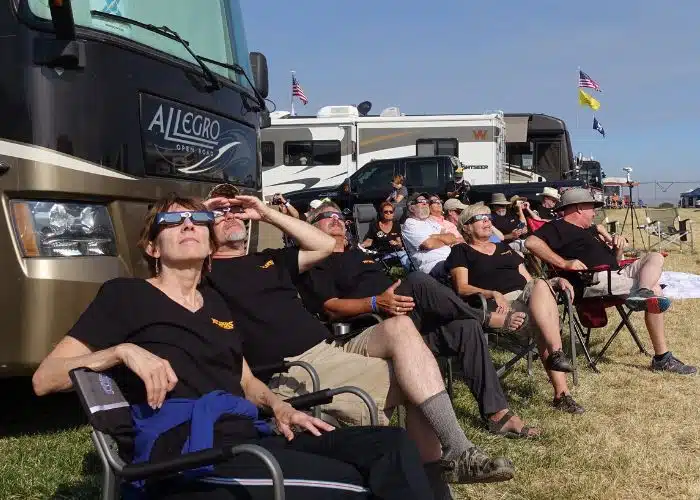
Is it safe to look at a solar eclipse?
When viewing a solar eclipse, you MUST wear protective solar eclipse glasses at all times. The only exception to this is during the maximum phase of a total solar eclipse when you are within the path of totality. That is because, for those brief moments, the Sun is completely blocked by the Moon, and you only see the light of the Corona.
As long as you have the correct protective glasses you can watch the eclipse. If you choose to view the eclipse with a telescope for a more detailed view, ensure that the telescope is equipped with appropriate light filters.
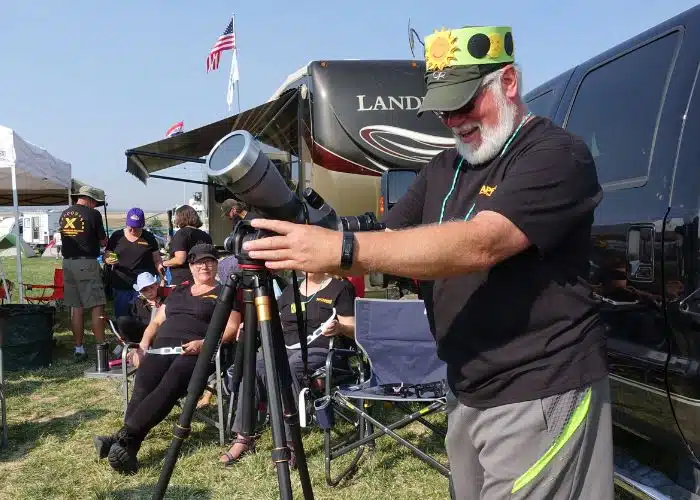
Marc McCalmon views the total solar eclipse through his telescope in 2017
8 Tips for fully enjoying a solar eclipse
- Always wear your solar eclipse glasses when looking at the sun, unless it is a total solar eclipse during a full eclipse. Which is a very short time.
- Stay present and engaged. It only lasts a couple of minutes, and you will want to immerse fully in the experience during that time.
- If capturing photos. Get pictures of shadows because they will show the ring of fire, arcs, or other unique patterns. Also, capture the wonder on the faces of family and friends. You will not be able to get great photos of the sun without a telescope with special filters.
- Be patient. Expect abnormally large crowds in areas with maximum viewability. Traffic in and out of the area might be heavy hours after the eclipse’s peak. Especially in popular tourist areas. Also expect challenges with cellular reception with the large crowds, as the cell towers in the area might become temporarily overloaded.
- Make the most of the experience with friends and family, or at a festival event, to fully immerse yourself in the eclipse energy and share the experience with others.
- If traveling for the event, book your camping or other reservations as soon as possible, as they will book up many months in advance.
- Consider leaving pets at home as they may get scared with the crowds, or the strangeness of the sun going away. It was surreal for us to observe the stillness of nature and pets during the totality phase of the 2017 eclipse.
- If possible, find somebody with a telescope (and proper filter) for more detailed viewing.
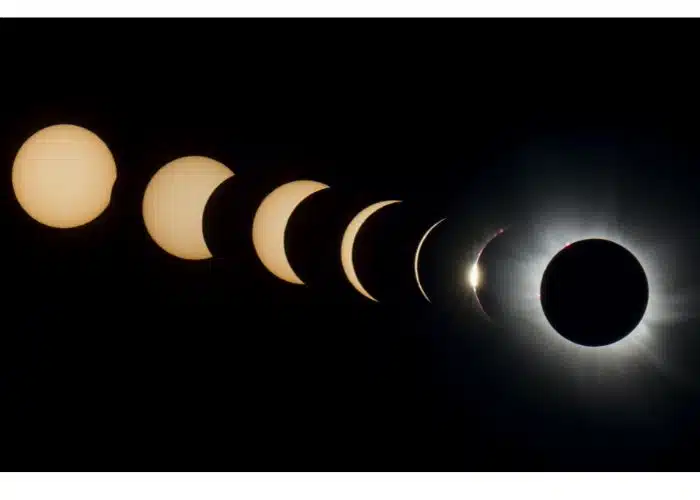
What are some events or activities during the next solar eclipse?
Multiple events are already popping up nationwide for viewing the 2023 annular solar eclipse. The biggest one is the EclipseFest23 event – near Crater Lake National Park – in Klamath County, Oregon. The event includes a multiple-day festival and concert with the popular band Smash Mouth, and on-site camping for RVs and tents, food and drinks, vendors and artisans, daily activities, and more. But, if you cannot travel that far, check the National Eclipse website for an event near you.
When is the next TOTAL solar eclipse in the US?
Total solar eclipses are rare. The last two total solar eclipses on US soil were in February 1979, then 38 years later in August 2017. Since the Earth’s surface is mostly water, the best viewability is usually over water.
The next total solar eclipse in the US will be on April 8th, 2024. It will cross North America in a northeasterly direction. First, it will pass through Mexico. Then enter the USA in Texas, and cross in a northeastern direction up to Maine. It will also be visible in southeastern Canada. There will not be another area of totality for a solar eclipse in the US until at least 2030.
Are you a world traveler? If so, you might be able to catch the upcoming total eclipses in Western Europe in 2026, North Africa in 2027, and Australia in 2028.
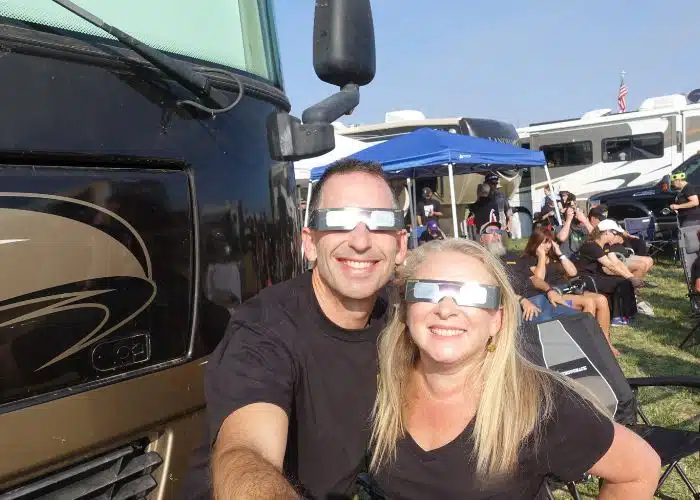
Where will we be for the next solar eclipse?
The next solar eclipse is the annular solar eclipse on 14th October, which will cross many states from Oregon to Texas.
We’ll be pointing the RV west and heading to Klamath County, Oregon (near Crater Lake) to be part of Eclipsefest23! Not only is this event taking place in one of our favorite areas of the country, but it’s shaping up to be THE biggest Annular Solar Eclipse watch party for RVers, with camping on-site, food and drink, a Festival, and a live concert by Smash Mouth. And we’ll get to hang with our RV-community, as we experience an amazing and rare solar eclipse event together!
We can’t think of a better reason to jump into the RV and head out for a road trip, exploring some of our favorite destinations along the way. Will we see you there? Have you experienced an eclipse?
We’d love to hear from you in the comments below!
Watch our short video of the Solar Eclipse in 2017
Sign up for our email newsletter with the latest RV park reviews, news and updates.

Author Bio: Marc Bennett
A Colorado native, Marc is an avid cyclist and hiker who has lived, worked, and traveled by RV to all 50 USA states, while working full-time. He is co-author, with his wife Julie, of two bestselling books: "RV Hacks: 400+ Ways to Make Life on the Road Easier, Safer, and More Fun!" and "Living the RV Life: Your Ultimate Guide to Life on the Road". In RV life, Marc takes care of all the dirty jobs – fixing things, washing dishes, and dumping the black tank.
More RV Travel Content
Want to check out more RV travel content? Here are some we think you will like. Hover over each image to see the post title.
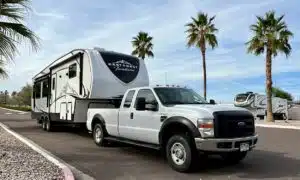
How Much? Arizona Winter RV Road Trip Stats and Comparison
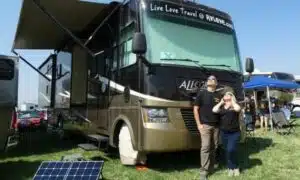
Solar Eclipse of April 8 2024 Path: Why and Where You Should Go!
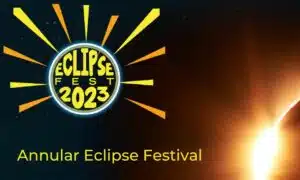
See the Annular Solar Eclipse, Camp at EclipseFest23: Multi-Day Festival in October
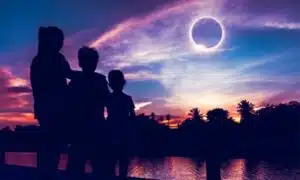
The Next Solar Eclipses In The US: 2023 and 2024

Canadian Border Crossing Tips With Your RV

Our California RV Trip Recap And Cost Comparison
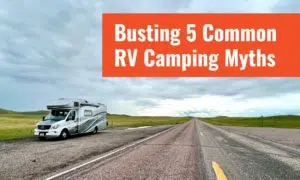
Busting 5 Common RV Camping Myths With Proof!

Save Money On Fuel With These 7 Top Tips

Our 8,500 Mile RV Trip to Florida and Beyond

Albuquerque Balloon Fiesta Guide (2023 update)

Is Virginia for Lovers? Finding Love – RV style

Our Top 5 Highlights after 5 Years of Full-Time RVing
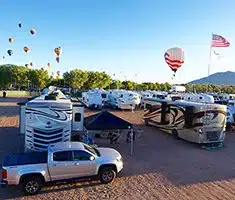
Top Tips for RVing at Albuquerque International Balloon Fiesta

Your Guide to a Great Time at Albuquerque International Balloon Fiesta

17 Inspiring National Parks You Must Visit
GOT COMMENTS OR QUESTIONS?
We would love to hear from you. Drop us a note in the comments section below.


